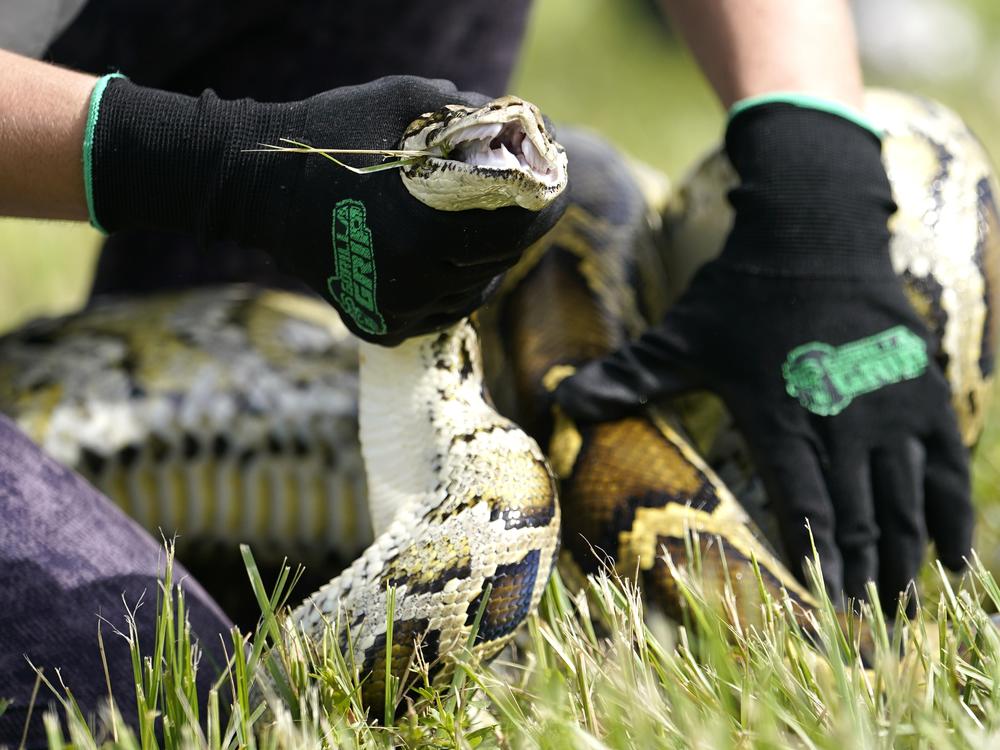Section Branding
Header Content
Here’s why snake hunters from across the U.S. are wading into the Florida Everglades
Primary Content
It’s the time of year when Florida officials allow both amateur and professional snake hunters alike to scatter across parts of the Everglades on a mission to capture as many Burmese pythons as they can wrangle.
The annual Florida Python Challenge began last Friday and runs until 5 p.m. next Sunday, during which time participants must catch and kill the nonvenomous constrictors, which feed on the state's native fauna.
“Removing invasive pythons from across the Greater Everglades Ecosystem is critical, and we must do everything we can to combat this invasive species,” Ron Bergeron, a member of the South Florida Water Management District governing board, said in a statement.
Burmese pythons were popular pets in Florida in the late 1970s and '80s, but some owners began releasing them into the wild as early as 1979, the state said.
The tan and brown snakes established a foothold in South Florida — particularly in Miami-Dade, Collier, and Monroe Counties — where they began to have an impact on the native environment.
Burmese pythons, which grow to an average size of 6-9 feet and sometimes much longer, have few natural predators. But they've been known to hunt prey as large as alligators and deer and as small as woodrats and spoonbills — including threatened and endangered species. They may also harbor parasites that can kill snakes native to Florida.
The species also has a "high reproductive potential," the state said, with female Burmese pythons able to lay between 50-100 eggs annually.
More than 600 Florida Python Challenge competitors will have a chance to win a $10,000 grand prize for the removal of the most pythons during the 10-day competition. Other cash prizes will be awarded for the most snakes removed and the longest python removed among three groups: novice, professional and military.
State officials said 917 Burmese pythons have been removed to date through the annual competition (ongoing now for at least a decade), including 209 snakes last year.


